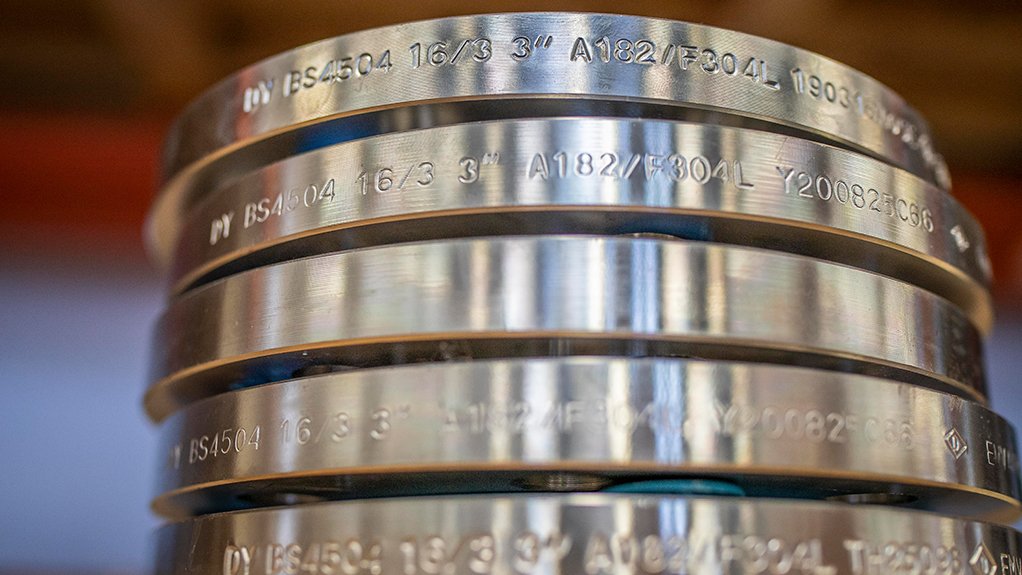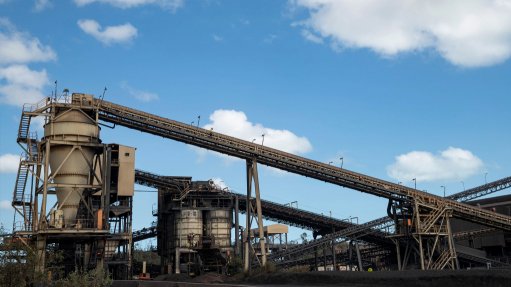Global collaboration urged to raise $1.4tn for iron, steel decarbonisation
To meet 2050 climate goals, the global iron and steel industry will need to invest $1.4- trillion across the value chain, from mining to steelmaking, estimates research and consultancy firm Wood Mackenzie (WoodMac).
A research report titled ‘Pedal to the Metal: Iron and steel’s $1.4-trillion shot at decarbonisation’, published by WoodMac, states that the iron and steel sectors emit 3.4- billion tonnes of carbon a year, equal to 7% of global emissions.
This while steel demand growth is not slowing down, and is estimated to reach 2.2-billion tonnes a year by 2050 – 15% higher than the demand for steel in 2021.
“Decarbonising the steel industry is a staggeringly big task. To meet WoodMac’s 1.5 ˚C accelerated energy transition scenario by 2050, steel emissions must reduce by 90% from current levels. Business as usual is no longer sustainable,” says research director and report author Malan Wu.
The firm’s analysis shows that between $800-billion and $900-billion will be needed to abate carbon from existing steelmaking infrastructure, such as setting up new hydrogen-based direct reduced iron (DRI) and electric arc furnaces.
Wu points out that mining companies will need to play an active role in cutting their operational emissions, as well as invest in new high-grade mines and green pellet capacities to feed green steel.
In turn, this will require five times the current supply of high-grade pellet feed, equivalent to 750- million tonnes, translating into an investment of between $250-billion and $300-billion.
“To achieve net zero by 2050, three- quarters of steel production will have to use low-carbon technologies, requiring the commercialisation and uptake of new technologies such as DRI and molten oxide electrolysis running on renewable energy.
“Switching to clean energy will also require about 2 000 GW of dedicated renewable generation capacity, equivalent to two-thirds of current global renewable generation capacity,” Wu highlights.
She adds that a hydrogen ecosystem will also need to be developed for green steel, as decarbonisation will require about 50-million tonnes a year of competitively priced green hydrogen, with commercial viability versus conventional steelmaking routes requiring green hydrogen supply at $2/kg.
The report warns, however, that these measures will still fall short of emissions targets, which necessitate a further incremental $200-billion to $250-billion investment in carbon offset measures, such as carbon capture, utilisation and storage, as the industry will need to capture and store 470-million tonnes of carbon to reach its emission target in 2050.
Green premiums are also inevitable, given new technologies and low-carbon feedstocks are likely to inflate steel production costs by 15% to 20%, with steelmakers paying about $100/t by 2050 to align themselves to a 1.5 °C goal by 2050, Wu avers.
“While steelmakers will have to swallow the price hikes for raw materials, carbon abatement costs will ultimately be passed on to steel end-users, meaning it is the consumer who must pay for the green premiums.”
Regional Disparity
WoodMac reports that the iron and steel industry will also require support from global carbon policy.
To date, most national carbon markets are nascent and concentrated in mature economies. As more than 60% of steel production comes from China, Beijing must implement aggressive carbon pricing and taxation – if steel’s high carbon footprint is to be addressed, she says.
“Regional disparity will emerge, as a global response looks unlikely. Carbon mitigation tactics and strategies will vary widely, with mature economies, such as the European Union, the US, Japan and South Korea, spending 50% more than emerging economies.
Mature economies will also decarbonise much faster, incurring a higher carbon abatement cost,” Wu warns.
“The transition to net zero calls for collaborative action globally and a unified approach across the value chain to turn risks into opportunities,” she concludes.
Comments
Press Office
Announcements
What's On
Subscribe to improve your user experience...
Option 1 (equivalent of R125 a month):
Receive a weekly copy of Creamer Media's Engineering News & Mining Weekly magazine
(print copy for those in South Africa and e-magazine for those outside of South Africa)
Receive daily email newsletters
Access to full search results
Access archive of magazine back copies
Access to Projects in Progress
Access to ONE Research Report of your choice in PDF format
Option 2 (equivalent of R375 a month):
All benefits from Option 1
PLUS
Access to Creamer Media's Research Channel Africa for ALL Research Reports, in PDF format, on various industrial and mining sectors
including Electricity; Water; Energy Transition; Hydrogen; Roads, Rail and Ports; Coal; Gold; Platinum; Battery Metals; etc.
Already a subscriber?
Forgotten your password?
Receive weekly copy of Creamer Media's Engineering News & Mining Weekly magazine (print copy for those in South Africa and e-magazine for those outside of South Africa)
➕
Recieve daily email newsletters
➕
Access to full search results
➕
Access archive of magazine back copies
➕
Access to Projects in Progress
➕
Access to ONE Research Report of your choice in PDF format
RESEARCH CHANNEL AFRICA
R4500 (equivalent of R375 a month)
SUBSCRIBEAll benefits from Option 1
➕
Access to Creamer Media's Research Channel Africa for ALL Research Reports on various industrial and mining sectors, in PDF format, including on:
Electricity
➕
Water
➕
Energy Transition
➕
Hydrogen
➕
Roads, Rail and Ports
➕
Coal
➕
Gold
➕
Platinum
➕
Battery Metals
➕
etc.
Receive all benefits from Option 1 or Option 2 delivered to numerous people at your company
➕
Multiple User names and Passwords for simultaneous log-ins
➕
Intranet integration access to all in your organisation





















